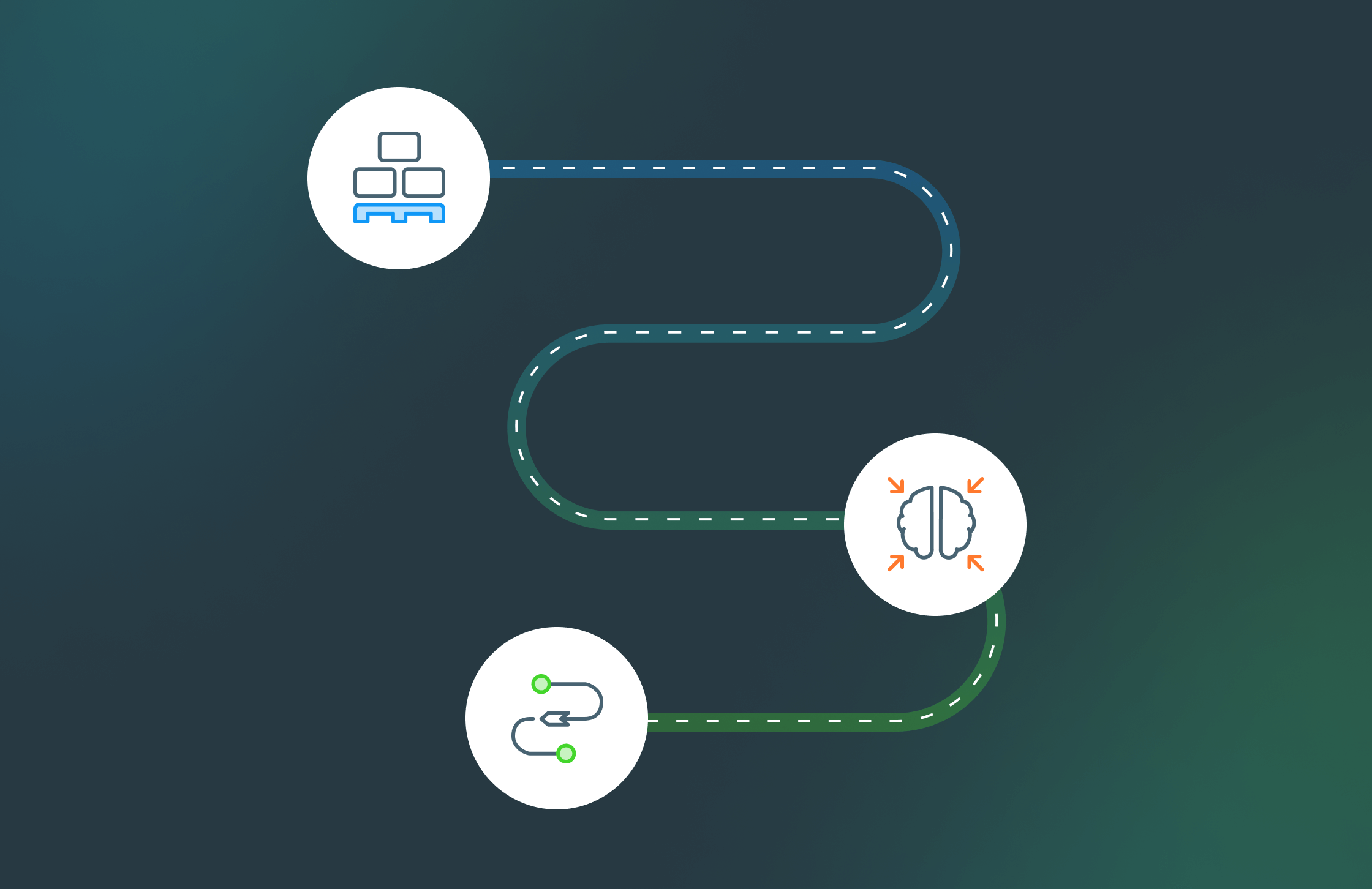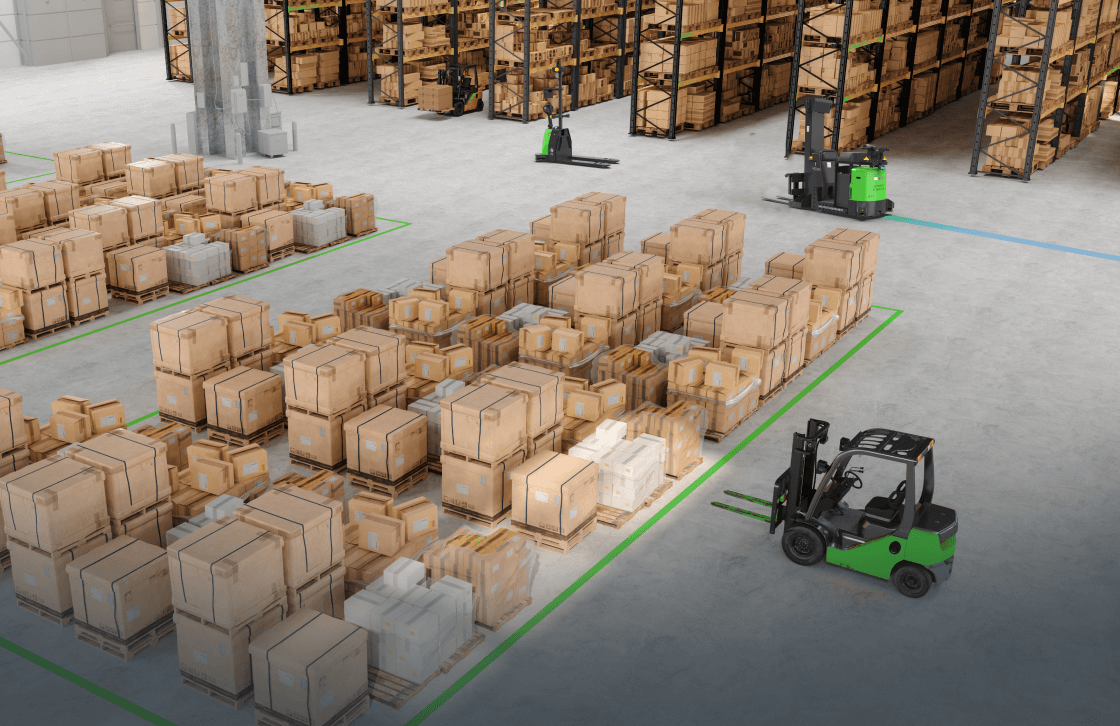Robotic Forklifts 101:
There are many common assumptions that impede the adoption of robotic forklifts, but adopting automation doesn’t have to be hard! In this quick, 20-minute, interactive presentation, we’ve asked Jeff Huerta, Senior Vice President of Sales at Vecna Robotics, to explain three tactical ways you can move forward with robotic forklifts.
In a recent study conducted by Peerless Research Group, all trends indicate that manufacturing, warehousing, and distribution organizations are making a commitment to invest in robotic forklifts in the coming year. Despite economic uncertainty, the study showed that 67% of companies reported that their adoption timeline of self-driving industrial vehicles accelerated or stayed the same in 2020.
While the intention is clear, the road to adopting automation can raise many questions. Many organizations that have never adopted robotic forklifts assume that this technology is not for them. However, assumptions can stand in the way of making easy automation gains. Unfortunately, those companies suffer long-term, losing out to labor challenges and the cost of doing nothing, ultimately falling behind.
The good news is: that adopting automation is not as hard you might think. In this article, we’ll cover common assumptions and tactical ways to move past them.
Common Assumptions that Impede the Adoption of Robotic Forklifts
Here are some common assumptions and what you need to know to work past them.
- “We’re not organized enough”: Your facility’s cleanliness and frequently changing processes are not an indicator of whether automation will work for you. For example, if you are a manufacturing organization, chances are your production floor changes frequently. The truth is, robotic forklifts see not just where they are and what’s nearby as they travel, but they also adjust to changes in your environment. In particular, Vecna Robotics’ Autonomous Mobile Robots do not need to be remapped every time there is a route change. They simply choose an alternate path based on their view of the world.
- “My site isn’t ready”: Being “Ready” varies depending on your team’s labor challenges. In many cases, the greater the labor challenges, the greater the cost of doing nothing. In addition, your readiness will be dependent on understanding the financial feasibility for your specific company, workflow, and fleet size. Finally, your readiness depends on having conversations with your team and staff. Getting your team on board early is key to success, as we’ll discuss in the next section.
- “It’s too expensive”: It’s too expensive NOT to automate. In fact, aside from the “cost of doing nothing”, both Capital Expenditure and RaaS models offer significant ROI. In a CapEx model, a 2-3 shift operation can expect ROI from 12-24 months. The ROI comes from using one single robot over multiple shifts and applying those labor savings toward value-added tasks. In a RaaS subscription model, you’ll see immediate benefits and ROI from day one.
3 Tactical Ways to Move Forward with Robotic Forklifts
In the past, we’ve talked about the Crawl, Walk, Run approach to deploying autonomous mobile robots. In this article, I aim to give you three actionable things you can do right now to move past common assumptions and plan to incorporate self-driving forklifts in your facility.
1. Understand pallet movement in your facilities
Pallet movement is the foundation for any robotic forklift deployment. Look for areas in your operations where people are spending time moving pallets. These non-value-added tasks are great adoption areas for autonomous mobile robots. If you’re unsure where to look, here are some common areas in warehousing and manufacturing where workers spend a lot of time moving pallets:
- Cross-docking product from receiving to outbound docks
- Moving pallets from one staging location to the next in preparation for another process to take place thereafter
- Moving pallets from Finished Goods to shipping and replenishing the lines with raw materials
- Milk runs where staff drive materials from station to station, as in a line-side replenishment scenario
2. Educate your staff
After using the exercise above to define an application, you should start educating your staff on potential workflow changes. It’s never too early to talk about your reasons for investigating new material handling robots. Technological change is about empowering people. What’s more: employee attitudes from management to floor staff can make or break a project. Adopting the latest warehouse technology should be seen as an enhancement tool – not a threat. Here are some ways to get your team on board before you even go live with robotic forklifts:
- Focus your team on the ways that their daily tasks will shift to take on more meaningful work
- Explain that pallet movement will be handled by safe autonomous vehicles
- Get into the details of how the technology works and how you intend to work with it
Vecna Robotics offers support for pre-deployment and post-deployment education for every stakeholder in your organization, from senior management to MHE operators. During the go-live period, our team is on the ground in your facility to provide education, answer questions, and ensure robots are working with your processes as smoothly as possible.
3. Reframe what you know about the investment in automation
Often when we think about installing new autonomous solutions in our industry, we think of all the things that have historically come along with it: IT networking, infrastructure, construction, and more. These can add up to significant costs, plus the cost of interruption to your workflow. Good news! Autonomous Mobile Robots do not require the heavy infrastructure changes of the past. Think of an AMR deployment as adding a new type of material handling equipment to your fleet. No private network, no facility modification, no operational downtime required. Just a different kind of MHE to drop in and lighten the load on stretched staff.
In conclusion, overcoming assumptions is the first step to realizing that getting started with robotic forklifts is not as hard as you might think. By taking concrete steps to improve your facility readiness, staff readiness, and to understand associated costs, you’ll be well on your way to greater operational efficiency in no time.






